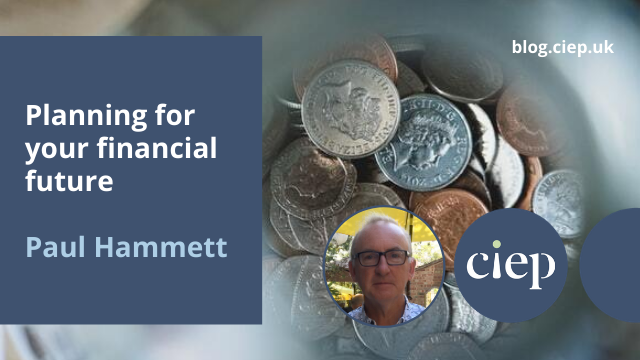Just as important as our ability to edit text to a high standard is our ability to run a successful business. Liz Jones looks at ways to maximise your earnings as a freelance editor.
- Asking for more
- Keeping emotions out of financial negotiations
- Selling extra services
- Explaining when a budget is insufficient
- Fee structures
- Charging for extras
- Charging what you’re worth
 The point of running an editorial business, apart from getting to read all day, is to make money. There’s no shame in this, but money can still be strangely difficult for editors to talk about. Perhaps because, by and large, we’re quite nice. Perhaps because, secretly, we can’t quite believe we deserve to be paid well for doing something so civilised.
The point of running an editorial business, apart from getting to read all day, is to make money. There’s no shame in this, but money can still be strangely difficult for editors to talk about. Perhaps because, by and large, we’re quite nice. Perhaps because, secretly, we can’t quite believe we deserve to be paid well for doing something so civilised.
We’ve all heard of editing gigs that pay less than minimum wage. Many of us have probably been offered them. But this is not the norm, and it’s not necessary to support it. It’s perfectly possible to earn a good living as an editor, working reasonable hours for pay that reflects our experience, skill and level of professionalism.
That doesn’t take away from the fact that it can be hard to be hard-nosed about money. Even after 13 years of hustling, I still sometimes have to psych myself up to charge what I know I’m worth, without apology or qualification. But it can be done. Here are seven tips for making more money from your editorial business, while keeping your clients happy, and without selling your soul.
1. Ask for more
I’m not going into whether you or your client should be setting the rate, here. I suspect that for many editors, a combination of approaches works for them. Sometimes you’ll be asked to quote for a job; sometimes the client will suggest a rate or fee. It’s the latter option I’m interested in here, and ‘suggest’ is the key word. The client is suggesting what they can pay you, not telling you. There’s always room to ask for more if you think the job warrants it. It’s quite likely that if you do ask for more, there will turn out to be some wiggle room in the budget to accommodate that.
2. Break the emotional link
When talking money with clients, be ice cold. (You can still be polite, don’t worry!) Remember that the price is simply about the work you can do for them, not your worth as a person. It’s also nothing more than a transaction: the client needs something doing, for which they will have to pay. It doesn’t matter how lovely they are to work with, or how amazing the project is, or if you feel you should help in some way. It’s business, pure and simple. Anything on top of that transaction is a bonus, but a bonus that is entirely separate from your need to be paid properly and on time for work completed in good faith.
3. Offer more yourself
Sometimes a client says they want a proofread, but you know a project really needs more development work. If you can show the client how they will benefit from commissioning you to do a larger job, even with the increased cost, this can be good for everyone. You’ll earn more, and the client will get a better result. A crucial part of successful freelancing is selling yourself – and not just making clients aware of your presence, but ensuring they fully understand the value you can bring to a project.
4. Say no and say why – because this can lead to yes
I sometimes see freelancers discussing ‘how to say no’ as if it were a dark art. It’s not, it’s just a word. I’m a nice person, and I care what people think about me too, sometimes too much, but still I have no trouble with saying a blunt no. If someone offers me work for a rate that is very far below what I find acceptable, I don’t want to waste either of our time. I’ll say a brief but polite no, but I’ll also say why. Not ‘I’m fully booked’, or ‘I don’t think I’m the right fit for this job’, but ‘I can’t do this because I would charge at least double what you’re offering’. Mostly, I never hear from the prospective client again. But sometimes, they genuinely didn’t realise how far off the mark their offer was – and they revise it accordingly. Then it becomes something I can consider – and we’ve both benefited.
 5. Find a different way of charging, acceptable to both sides
5. Find a different way of charging, acceptable to both sides
Sometimes I’m offered an hourly rate for work that is far below the CIEP suggested minimum rate. However, if I ask to see the job in its entirety and provide the client with a fixed fee for what they need doing, it might be that I can provide a quote that is within their budget but that also results in a fee (and an hourly rate) that I’m happy with.
6. Don’t give work away for free
Here, I’m not talking about proofreading a whole book for ‘exposure’, which is obviously not a favourable proposition, but rather about the little extra aspects of a job that can seem insignificant, but which we should be charging for. Do I charge for meetings? Hell yes, and particularly if they involve preparation or travel. Even a friendly Zoom call has associated costs for the freelancer. You may choose to include these kinds of extras in the overall fee for a job, which is fine, but make sure you take them into account one way or another.
7. Be bold
This circles back to tip 1. Quite simply, if you don’t ask, you don’t get. Sometimes it pays to work out what you think you should charge, and then charge more. You will read advice that tells you to try doubling your rates. (I’ve never attempted this myself; perhaps one day I will. I recommend reading Cash Money Freelancing by Tom Albrighton for lots more ideas like this – you can follow @CashFreelancing on Twitter for regular tips.) But I have often worked out a good rate for something and then added a bit extra to my quote. Not just for contingency related to the project. But because of all the things we have to pay for ourselves as freelancers: time off, sick leave, pension and so on, as well as quality of life. In this instance, the worst anyone can say is no, and even then, all is not lost – you can still negotiate. The point is, no one is just going to hand you money for doing this wonderful job. You’re going to have to stand out, you’re going to have to earn it, and you’re going to have to ask for it. And that’s fine.
Summing up
This article has looked at ways to maximise your earnings, while providing an excellent service and, crucially, keeping your clients happy. It can be done – and it leads to better outcomes for everyone. For more information about pricing work, I recommend the CIEP guide Pricing a Project, by Melanie Thompson. It’s also worth checking the current CIEP suggested minimum rates, and directing clients there if they are offering less.
About Liz Jones
Liz Jones has been an editor since 1998, and freelance since 2008. She works on non-fiction projects of all kinds, for publishers, businesses and independent authors. She’s
also one of the commissioning editors on the CIEP information team.
 About the CIEP
About the CIEP
The Chartered Institute of Editing and Proofreading (CIEP) is a non-profit body promoting excellence in English language editing. We set and demonstrate editorial standards, and we are a community, training hub and support network for editorial professionals – the people who work to make text accurate, clear and fit for purpose.
Find out more about:
Photo credits: currency by Jason Leung; Nope by Daniel Herron, both on Unsplash.
Posted by Abi Saffrey, CIEP blog coordinator.
The views expressed here do not necessarily reflect those of the CIEP.










